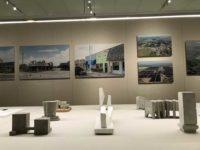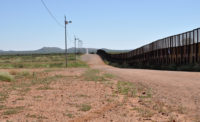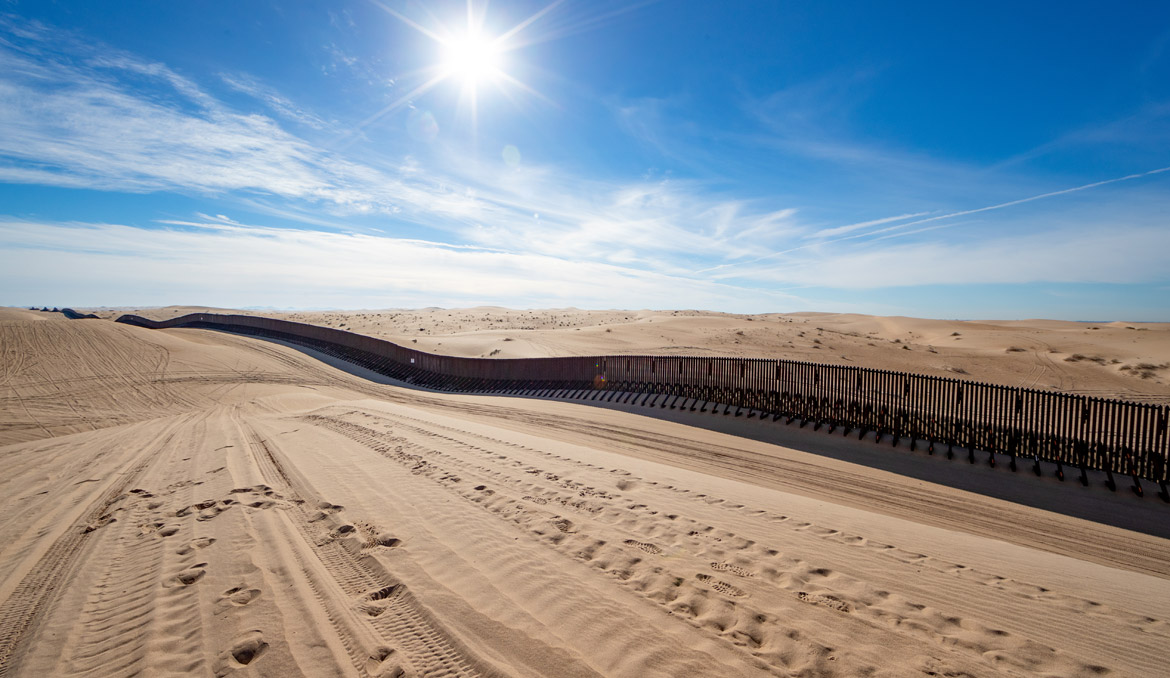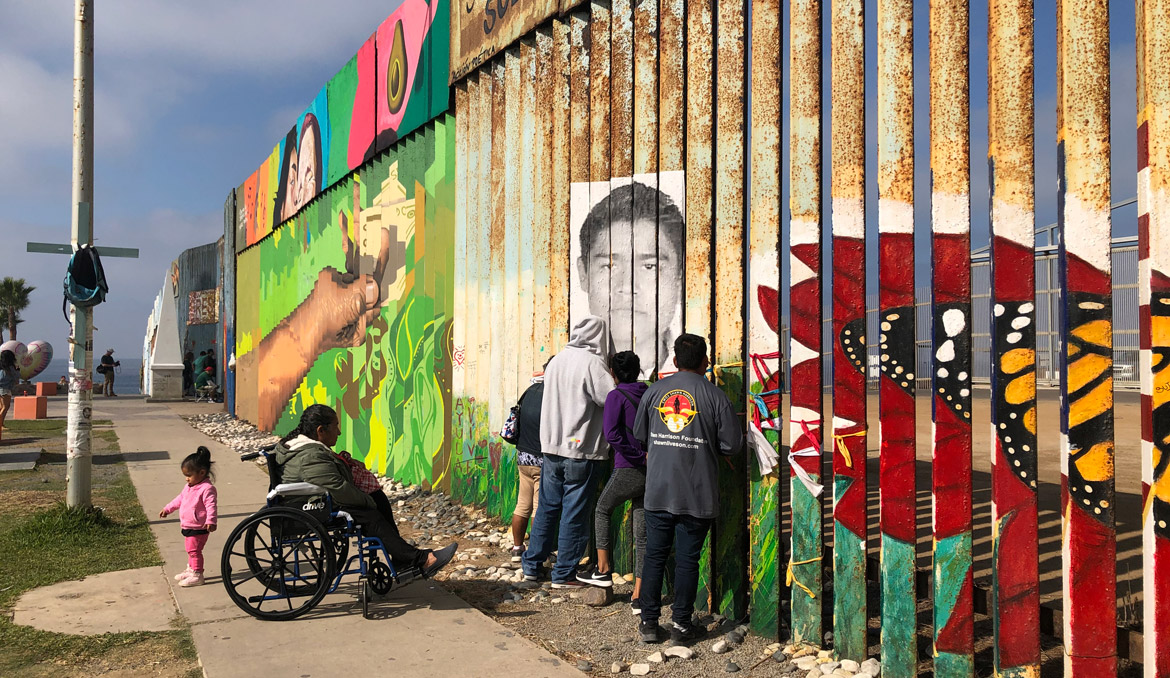Contested Ground: The Wall/El Muro Exhibition Looks at the US/Mexico Border from Both Sides

Due to the constantly shifting contour of the sand dunes, a section of the border wall 20 miles west of Yuma, AZ “floats” on top of the ground and can be lifted and resettled as necessary. Photo © U.S. Customs and Border Protection photo by Jerry Glaser

The exhibition features photography and a bright pink teeter-totter that had been installed for a brief time at the U.S.-Mexico border. Photography © Elman Studio

Information and data on immigration, as well as models and artifacts, offer a range of perspectives on the topic. Photography © Elman Studio

A family gathers to meet up with relatives on the other side of the border, Tijuana, Baja California, November 2019. The double-fenced area on the U.S. side opens for several hours each weekend to allow families to meet and see each other through the steel mesh. Photography © Sarah A. Leavitt




Focusing on the border between the U.S. and Mexico, the exhibition The Wall/El Muro: What Is a Border Wall? approaches its hot-button subject in multiple ways—as a physical boundary, a work of architecture, a concept, and a mindset. The show at the National Building Museum in Washington, DC, which will run for a year, brings a range of perspectives, from the people who have built the wall over many decades to those who live alongside it today.
Visitors first encounter a wall of vertical wooden slats set at a 45-degree angle, allowing views through it from certain vantage points and blocking them from others. The exhibition starts with a broad overview, including a 1728 map of native territories in the borderland region, a timeline showing the history of the border wall, and a video stitching together Google images to create a contemporary aerial perspective of the border.
Then The Wall/El Muro drills down to the specific: scale models and drawings of both old border markers and contemporary border-wall mockups, the latter from a controversial 2017 competition undertaken by the Trump administration to build the wall upon which the former president campaigned. Perhaps less politically charged but more poignant is a selection of belongings left behind by migrants in the Sonoran Desert, and a soundscape of the southern border filled with native species’ calls occasionally interrupted by the loud buzzing of a surveillance drone passing overhead.
An actual full-scale section of border fence that once separated Calexico, California, and Mexcali, Baja California, gives uncanny weight to the fears and emotions driving America’s immigration policy. This section of fence, which the Army Corps of Engineers had repurposed during World War II from its original use surrounding a Japanese internment camp, helps connect past and present. “If you think about the transfer of that fence from the internment camp in Texas to the border wall in California, you begin to realize how all of our foreign policies and immigration policies or border policies are linked,” says Sarah Leavitt, who curated the exhibition. “It's not just a story about our border, it's a story about how we build an infrastructure to separate us from other people.”
The exhibition concludes with Teeter-Totter Wall, designed by California architects Ronald Rael and Virginia San Fratello with Colectivo Chopeke, an artists’ collective in Juárez, Mexico. Made of three bright pink, 14-foot-long teeter-totters, the work had been installed briefly in 2019 at the border between a suburb of El Paso, New Mexico and Juárez, allowing people on both sides to play with each other and see how action in one place affects the other. Erected without permission and dismantled after less than an hour by the team that created it, the piece underscores the volatile nature of the exhibition’s subject.








